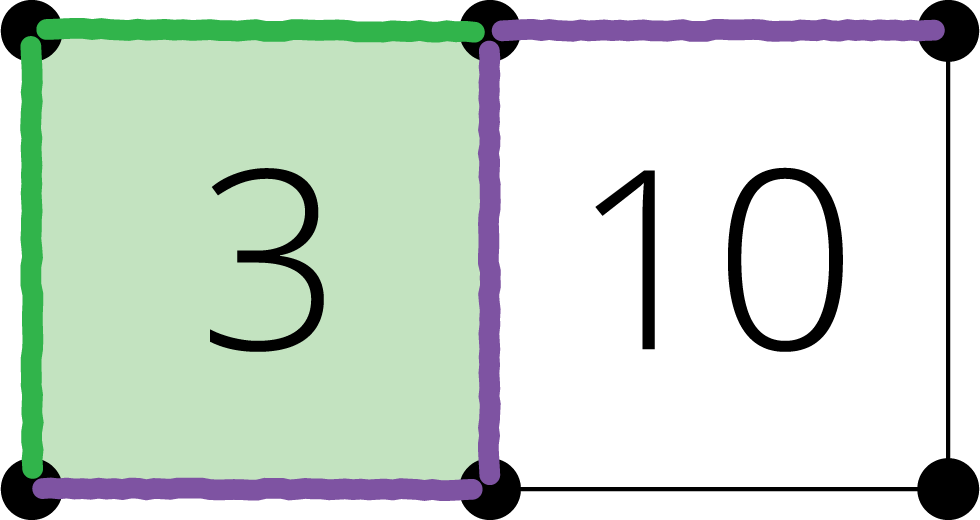Lesson 17
Center Day 3
Warm-up: Which One Doesn’t Belong: Clocks (10 minutes)
Narrative
This warm-up prompts students to compare four images of clocks. It gives the teacher an opportunity to hear how students use terminology and talk about characteristics of the clocks and the times they show in comparison to one another. Listen for the way students use “hands,” “hour,” and “half hour” and ask them to clarify what they mean in the synthesis.
Launch
- Groups of 2
- Display image.
- “Pick one that doesn’t belong. Be ready to share why it doesn’t belong.”
- 1 minute: quiet think time
Activity
- “Discuss your thinking with your partner.”
- 2-3 minutes: partner discussion
- Share and record responses.
Student Facing
Which one doesn’t belong?




Student Response
For access, consult one of our IM Certified Partners.
Activity Synthesis
- “Let’s find at least one reason why each one doesn’t belong.”
Activity 1: Introduce Which One, Grade 1 Shapes (20 minutes)
Narrative
The purpose of this activity is for students to learn stage 2 of the Which One center, which was first introduced in kindergarten. One partner chooses a shape on the game board. The other partner asks yes or no questions to figure out what shape they chose. Students may use counters to cover up shapes that have been eliminated. Students work with triangles and quadrilaterals.
Required Materials
Launch
- Groups of 2
- Give each group a gameboard and access to two-color counters.
- “We are going to learn a new way to play Which One. One partner picks a shape that is on the board. Their partner asks them yes or no questions to help them guess which shape their partner choose. Let’s play one round together. I will pick a shape and you can ask me questions.”
- Choose a shape from the gameboard.
- Help students rephrase any questions they ask that are not yes or no questions.
- “Once your partner has guessed the shape you chose, switch roles and play again.”
Activity
- 10 minutes: partner work time
Activity Synthesis
- “What questions did you ask that were most helpful?” (Does your shape have three sides? Are two sides the same length?)
Activity 2: Centers: Choice Time (20 minutes)
Narrative
The purpose of this activity is for students to choose from activities that offer practice adding and subtracting or working with shapes. Students choose from any stage of previously introduced centers.
- Can You Draw It?
- Match Mine
- Capture Squares
- Target Numbers
Required Materials
Materials to Gather
Required Preparation
Gather materials from previous centers:
- Can You Draw It, Stage 1
- Match Mine, Stage 2
- Capture Squares, Stages 1 and 2
- Target Numbers, Stages 1-3
Launch
- Groups of 2
- “Now you are going to choose from centers we have already learned.”
- Display the center choices in the student book.
- “Think about what you would like to do first.”
- 30 seconds: quiet think time
Activity
- Invite students to work at the center of their choice.
- 8 minutes: center work time
- “Choose what you would like to do next.”
- 8 minutes: center work time
Student Facing
Choose a center.
Can You Draw It?

Match Mine

Capture Squares

Target Numbers

Activity Synthesis
- “How did you decide to work with shapes or numbers?”
Lesson Synthesis
Lesson Synthesis
“How did you and your partner work together during centers? What went well? What can we continue to work on?”